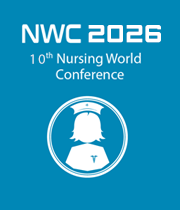Title : Improving nursing competence and patient care through mock codes
Abstract:
Many nursing students don’t get the opportunity for direct patient care following the pandemic; their opportunity to use equipment was almost nonexistent. Our 30 bed pediatrics/PICU unit experienced an influx of new nurses, both recent graduates and nurses transferring from other units, usually adult. The amount of anxiety surrounding a pediatric code was almost palpable with new employees. Informal conversations and a short questionnaire yielded results that said a few things. One was that the nurses without code cart experience were very apprehensive about opening it. Several responded that they “didn’t want to waste anything” by cracking the lock off the code cart. The new graduate nurses only saw an adult code cart in orientation and verbalized being frightened with the amount of “things” in it. The nurses that transferred from adult units were amazed at the amount of items in the code cart and how precise everything needs to be drawn up. During the literature review, the same impression was evident; effective mock codes include high quality cardiac compressions/CPR, effective code team leadership, rapid code team assembly, and knowledge of code cart/meds. The purpose of this educational intervention was to have regular in situ mock codes as an extremely effective way for interdisciplinary teams to build high-risk skills in a safe yet realistic environment. Using an adult learning theory framework, engagement strategies included teambuilding exercises, role-playing, teach backs, and team competitions. The implications this educational intervention had was keeping staff members’ resuscitation skills sharp in a nonthreatening environment, clarifying the roles of team members during a code, establishing a “traffic control” plan to maintain order, and ensuring that equipment and medication is available. Mock codes and the ability to be hands on with code cart medications and equipment is relevant to nursing. The training increased staff satisfaction, improved team dynamics, and brought staff back to basics which is having increased compliance to AHA resuscitation standards.



